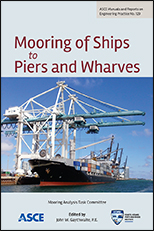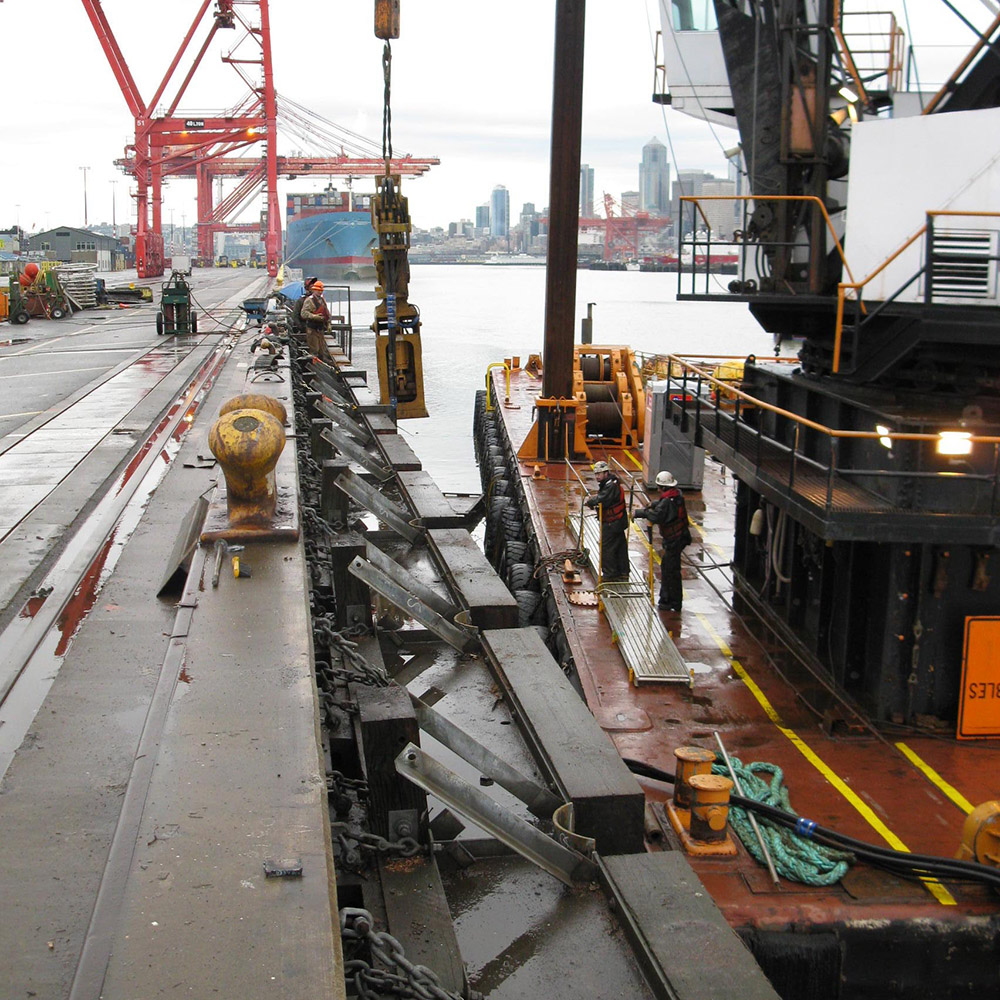Until the American Society of Civil Engineers (ASCE) Mooring Analysis Task Committee published the Mooring Ships to Piers and Wharves, there had been no single building code, standard, or guideline documents specifically addressing the design of berthing and mooring facilities in general. It was important and necessary to publish a guideline document that provides designers of marine facilities with background and resource information for facility and hardware designs.

Since participating in my first meeting of the mooring analysis committee back in March 2002, a lot of effort was expended by our committee of 10 to publish this practice manual. Over the course of the next 12 years, after meeting on a regular basis and conducting extensive reviews, research and discussion; the committee produced this waterfront design manual, a new ASCE Manual and Report on Engineering Practice No. 129.
What Is a Mooring?
A mooring is defined as a compliant structure that restrains a vessel against the action of wind, wave, and current. Tension members are chain, line, wire ropes, etc., whereas compression members are fenders, camels, and the like. Figure 1 shows typical ‘alongside’ berth mooring arrangement with tension and compression members.
The purpose of mooring is to safely hold a ship in a certain position at a berthing facility to accomplish a specific mission. A key need is to safely hold the vessel to protect the ship, life, and public, and to preserve the capabilities of the vessel and surrounding facilities. Ship moorings are provided for loading/unloading, ship storage, and maintenance/repairs.
Why Now?
Costly mooring incidents have emphasized the need for better understanding of mooring design principles. This manual of practice provides guidelines, which include design criteria, analysis methodologies, and other relevant information to determine safe mooring practices for vessels in ports and harbors. Today’s larger, complex ships, with greater wind exposure and deeper drafts, pose particular mooring challenges to designers, captains, and pilots.
The manual is organized as follows:
- Chapter 1 includes overview of vessel characteristics & dimensions, port facilities, typical mooring arrangements, and berth configuration.
- Chapter 2 introduces the selection of appropriate design criteria for specific environmental conditions.
- Chapter 3 reviews mooring system components, including lines, fittings, hardware, and fenders as they relate to berthed vessels.
- Chapter 4 describes sources of mooring loads and presents principles of calculating loads on moored vessels.
- Chapter 5 follows with methods of static analysis and an introduction to dynamic analysis to determine resultant line and hardware loads.
- Chapter 6 introduces operational considerations and includes discussion of limiting vessel movements at berth, breakaway incidents, and mooring system maintenance.
Where to Find the Manual
As a practicing waterfront engineer, I enjoyed the collaboration with peers across the country during the development of this document. It is an important reference for designers in the future and I enjoyed with a true sense of accomplishment upon seeing the final product.



